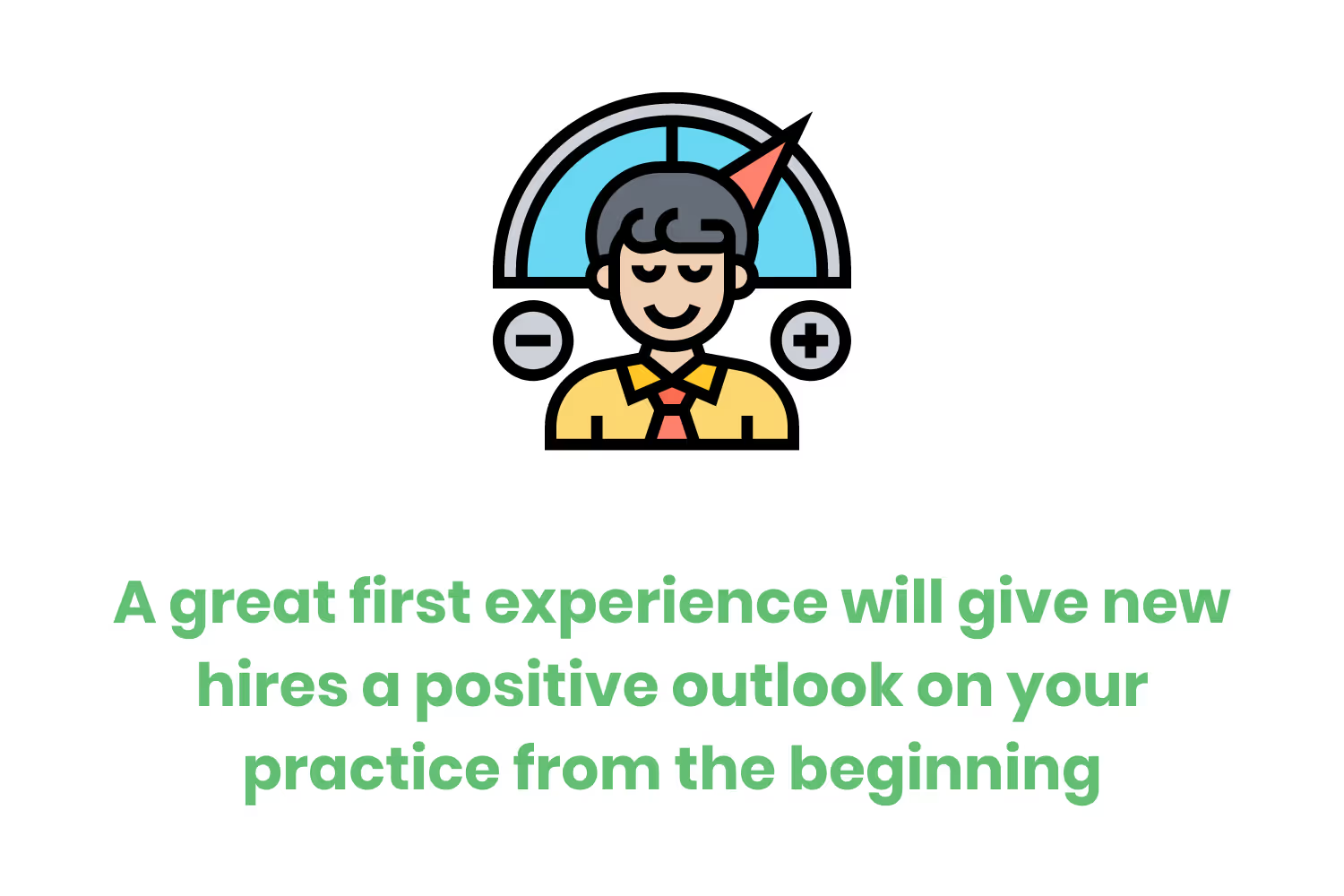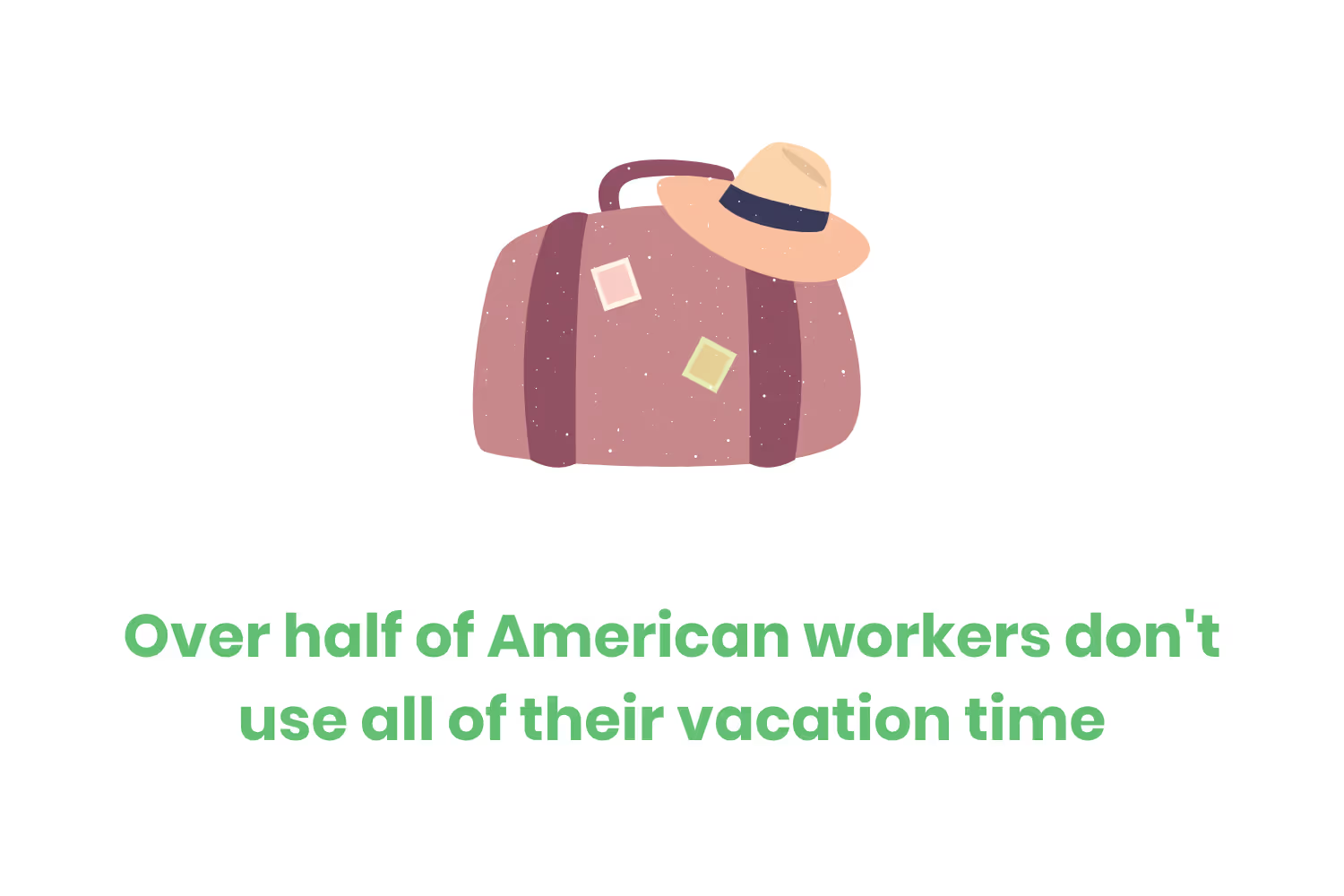15 Best Strategies for Employee Retention in Healthcare
Because of this health crisis, it’s more important than ever for practices to attract and keep their employees. Turnover will pose more complications for facilities that already need more staff to keep up with so many patients. But what do you do as a practice administrator to prevent staff from leaving? Here are 15 employee retention healthcare ideas.

With the current shortage of healthcare workers, the number of staff needs to increase dramatically to keep up with the demand for care. Estimates indicate that by 2025, the US will have a shortage of…
- 446,300 home health aides
- 98,700 medical and lab technologists/technicians
- 95,000 nursing assistants
- 29,400 nurse practitioners
So many health professionals have been leaving the field, resulting in not enough staff to care for patients. Since the beginning of the COVID-19 pandemic, overall healthcare employment has decreased by 524,000 staff. Nursing and residential care make up around four-fifths of this loss.

By 2032, this shortage will be even greater. The industry will be lacking close to 122,000 physicians. There won’t be enough to keep up with the need for healthcare. These shortages come at a time when there’s a rapidly growing aging population and more people are relying on healthcare.
Because of this health crisis, it’s more important than ever for practices to attract and keep their employees. Turnover will pose more complications for facilities that already need more staff to keep up with so many patients.
But what do you do as a practice administrator to prevent staff from leaving? Here are 15 employee retention healthcare ideas.
Warm Welcome for New Staff
You need to set a positive tone from the moment that a new employee starts at your practice. That way, they’ll think highly of you from the beginning. Otherwise, coming in with a poor experience would already give them a reason to leave.

Giving them this positive outlook depends on how you welcome them to your practice. It’s easy to just send an email or shake their hand on the first day, saying “Welcome to the team.” But that’s something that they’d already expect.
There are other ways to leave a more lasting impression, such as by giving them a welcome kit. As a health practice, you could include items like…
- A water bottle to use during work
- A travel coffee mug to get them through long shifts
- Scrubs that match your facility’s required uniform colors
- A company-branded jacket
- Useful items they’ll need for their job such as a penlight, watch, stethoscope, etc.
If you don’t want to maintain purchasing these items every time you have new employees, you can keep it more simple. Sending them a coffee gift card for their first day can give them the boost they need to get through the chaos of onboarding. If you have time, you can also take them out to lunch.
Even though these suggestions don’t require much planning on your part, it shows your staff from the beginning that you care about your team so they’ll want to stay.
Effective Training
The welcome ideas that I just mentioned are the fun part of starting with your practice. You can implement as many as you want, but these won’t retain staff if your onboarding doesn’t also include effective training.
If new hires don’t receive proper training, then they won’t know how to do their job. They wouldn’t want to stay if they end up causing mistakes or feel stressed because they don’t know what to do. It would also be frustrating for current staff if they have to pick up the slack for the new hires.

But effective training will give the employees confidence in their abilities and make the whole team more productive.
Follow Safety Standards
It sounds obvious that as a healthcare organization, you need to follow safety standards. But hospitals are one of the most hazardous places to work. There were 221,400 work-related injuries and illnesses in US hospitals in 2019 alone. Medical professionals worry about workplace violence because of how common it is.
Workers are more likely to quit their jobs for this reason. To prevent this, health practices need to take the necessary precautions to prevent injuries. This might include having security on each floor and providing training so staff can recognize patient behaviors.
When it comes to retention, safety doesn’t only apply to employees. These standards are even more necessary when it comes to patients. After all, it’s their health that employees are taking care of. Yet medical errors are common in this industry. 10% of all US deaths are due to these mistakes. 80% of them occur because of miscommunication among staff.

People who work in facilities where this is common won’t want to stay with the organization. It could jeopardize their medical license or they’ll risk a malpractice lawsuit because of a lack of safety. As if it wasn’t already important to follow safety standards for patients, it’s even more important so that you don’t lose staff too.
Stipends for Necessities
Offering stipends for necessities such as meals, housing, and transportation will help with employee retention in healthcare. Travel nursing positions offer these kinds of benefits so that nurses can maximize their income. Added perks like these are one reason why staff nurses leave their positions for agency jobs.
This means that health facilities need to compete to retain their local, full-time staff. Offering these stipends will boost retention so that the current team has more financial security to stay in that area. When their employer covers part of their necessities, they can keep more of their income for other personal expenses.
Relocation Assistance
Assisting with relocation costs helps attract staff to the area so your organization has more local employees. This is necessary for rural areas that lack enough medical personnel.
Almost 60% of areas that have a shortage of primary care professionals are rural. Because they don’t have these necessary staff, offering relocation assistance will incentivize more people to travel to that area for work. Covering the cost of workers’ housing again adds more financial support for them.

Improved Paid Time Off
Let’s face it: everyone wants vacation time, and healthcare employees deserve it. Burnout is a rising problem for them which is why so many end up leaving the field.
Depending on your organization’s current paid time off policy, this idea might not be a matter of adding more vacation time. Instead, you might just need to restructure your PTO policies or encourage staff to use their earned time.
Over half of American workers across the board don’t use all of their vacation time. Even though it’s available to them, they forfeit taking advantage of this benefit. If you notice that your employees aren’t using all of their time off, then adding more PTO wouldn’t necessarily change anything.

However, encouraging or even requiring them to use these days would make them more likely to do so. They won’t feel guilty about taking too much time off if you promote it. This will give them time to refresh to reduce their burnout.
They might also not be using their time off if your policy lumps sick and vacation time together. Because of this, they could avoid taking all of their PTO if they feel like they have to save it in case they get sick.
Instead, separate these into their own categories. For instance, instead of giving 15 days of PTO, you might give one week of sick/wellness time and two weeks of vacation time.
Although, if you do notice that all of your staff is going through their PTO every year, consider offering more. You could do this on an accrual basis so each year the employee is with the practice, they get more time off. That would incentivize them to stick around if they know they’ll get even more vacation the longer they’re with you.
Scheduling Options
It isn’t always easy to offer a flexible schedule in healthcare since you always need enough staff to care for patients. Your practice still needs to follow traditional scheduled hours especially if you’re an office that’s open during a set time frame.
But there are still ways to give employees autonomy over their schedules so they can have a work-life balance. This is so important for hospital staff since their schedules can change frequently and they work odd hours.

You should have the option for these employees to request which days they work within each schedule period. Of course, you might not always be able to accommodate every day they request. But this way, they at least get part of a schedule that’s convenient for them. If there are any days that they’d be unavailable for personal reasons, they can also indicate this so the scheduling manager can work around them. That way, you also avoid having someone call off for a shift.
Other staff may prefer to have a set schedule each week. Maybe they have kids that they need to tend to during the school week or they don’t have childcare on a certain day. Creating a set routine for those employees would help retain them since they can still balance their family needs at home and work all of their necessary hours.
Let’s not forget about weekend shifts. Whether you’re a hospital or an office that has weekend hours, people will want some control over those shifts. This isn’t to say that they should never have to work weekends, but rather that you should follow a schedule that’s easy for them to plan around. This might mean alternating every other weekend or having them work a set weekend each month.
Each of these options gives them some control over their work-life schedule while still filling all of their required hours.
Wellness Perks
Considering that this industry cares for people’s health and wellness, offering perks for employees’ well-being is also important. You want to empower staff to maintain great health since the field is physically demanding. Health perks can alleviate stress which just goes back to the point I made about needing to reduce burnout.

Some options you can offer include…
- Gym membership/wellness equipment reimbursements
- Access to mental health apps
- Free telehealth therapy sessions
- Health grocery store and restaurant gift cards
These perks will boost their commitment to taking care of their mental and physical health so that they have the energy to continue working in such a demanding industry.
Food and Beverages
I mentioned earlier how you can provide stipends for necessities such as meals. Your practice could make this more simple by providing the food and beverages during work hours.
Work can get too busy for employees to sit down to eat what they brought or leave to order lunch. It isn’t healthy though to go all shift without eating or drinking anything. Bringing in food and beverages to have in the break room makes it easier for them to grab something quick between seeing patients.
This again helps them feel energized at work so they’re less likely to start feeling burned out.
Tuition Assistance and Reimbursement
Education for healthcare jobs isn’t cheap. Depending on the position someone has, it could take over a decade of schooling. This often leads to debt for these workers which is just another added stress for them.
Offering tuition assistance or reimbursement helps offset these costs so they can earn their degrees without the financial pressure. This can also incentivize more people to go into the profession if they know that cost of schooling wouldn’t be a concern. If your organization has this benefit, you’ll attract these students to your practice.

Some staff may even choose to go back to school to get a higher degree so they can specialize their skills. This helps you retain employees who want to further their education so you have even more skilled workers.
Pay Raises and Appreciation Bonuses
It isn’t a surprise that money talks when it comes to jobs. A Glassdoor survey found that 67% of job seekers focus on salary when searching for work.
If you don’t offer competitive pay, then team members will leave for companies that pay more. Let’s look at travel nursing as an example. Pay is another reason why hospitals lose so many nurses to travel assignments. According to Indeed, the average weekly pay for a travel nurse position in the US is $1,999. The average for a floor nurse is $1,203.

Floor nurses become frustrated that hospitals pay travelers so much more than current employees for doing the same job. This causes these workers to eventually leave.
Instead of paying so much for temporary nurses, hospitals could pay their current staff more so that they have an incentive to stay. This would help resolve the need for so many travel nurses because retention would increase and they wouldn’t need to outsource for talent.
Offering bonuses for those who stick with the company shows that you recognize and appreciate their efforts.
Referral Bonuses
Another bonus option is with referrals. If current employees refer new medical professionals to work for your practice, then the employee who referred them receives a bonus.
This incentivizes them to try to get people that they know in the field to join your organization. It helps increase your number of workers so that you don’t feel the effects of the healthcare shortage.
Referrals are the top source for companies’ new hires, making up 30% of all hires. These new people would already have a positive opinion of your facility when they join since they received the referral from someone they know and trust.

Having this option gives your team an easy opportunity to increase their pay. Even if you can’t give them frequent pay raises, they still have a way to make more money. And in the end, it helps your management team since you’ll gain more skilled people.
Sign-On and Longevity Bonuses
Another way to attract more skilled workers is to offer sign-on bonuses. Don’t just reward the employees who referred new hires, but reward the hires as well. Now, you don’t just pay these full bonuses all at once when the person starts with your company. Instead, you pay it over time within each paycheck. So instead of paying them the regular base pay, it would be an increased hourly rate.
This way, they need to stay with your company for a certain amount of time before they would receive the entire bonus. This is another way to retain staff since they want to take advantage of receiving the full amount.
But what do you do once they get the last of their bonus money? To retain them even after this, you offer longevity bonuses. These are increases based on how long the person has been with your company and how much experience they have.
Longevity bonuses are also a way to reward current staff who might not have been with you when you started offering the sign-on bonuses. You wouldn’t want them to apply somewhere else that offers these bonuses. That’s why it’s again important to offer pay increases as a way to show your appreciation that they’ve stayed with your company.

On-Demand Pay
On-demand pay is paying your employees as they earn their money. This way, they don’t need to wait several weeks until a regularly scheduled pay period. For some people, waiting longer could mean forgoing necessities like groceries. But on-demand pay offers more financial security for those who would otherwise struggle to afford what they need.
Gather and Implement Feedback
Finally, ask your team for feedback. You can’t read their minds to know what exactly they need to get them to stay.
Asking for their input shows that you care to improve the workplace for them so that they’ll want to stick with your practice. Getting their feedback helps you identify exactly what you need to do to keep staff.
When they give their suggestions, make sure you implement their strategies. Sure, some of their ideas might not be feasible. But it opens the door to conversations about finding other solutions that might still be effective.

Conclusion
As you continued reading through this blog, you probably just kept imagining more and more dollar signs. Especially if you’re a small practice, how are you supposed to afford these kinds of retention ideas? After all, you might be struggling financially if you’re facing the costs of high turnover rates.
I’m not saying you need to implement all of these strategies. That just wouldn’t be feasible to do all at once. But starting small with a few options that are affordable for your practice will set the foundation. With healthcare workers leaving the field because they don’t feel valued, several efforts can go a long way.
As you begin to reduce turnover, you’ll also start being able to afford some of the more costly options. That way you can implement even more of these ideas that make you stand out against competitive employers. When staff feels like you take care of them, they’ll want to stay with your practice. They’ll be less likely to leave for different positions or quit the industry altogether.
At a time when there are already shortages that will only continue to increase, it’s more important than ever to provide new and attractive benefits to your employees.
Emphasize your product's unique features or benefits to differentiate it from competitors
In nec dictum adipiscing pharetra enim etiam scelerisque dolor purus ipsum egestas cursus vulputate arcu egestas ut eu sed mollis consectetur mattis pharetra curabitur et maecenas in mattis fames consectetur ipsum quis risus mauris aliquam ornare nisl purus at ipsum nulla accumsan consectetur vestibulum suspendisse aliquam condimentum scelerisque lacinia pellentesque vestibulum condimentum turpis ligula pharetra dictum sapien facilisis sapien at sagittis et cursus congue.
- Pharetra curabitur et maecenas in mattis fames consectetur ipsum quis risus.
- Justo urna nisi auctor consequat consectetur dolor lectus blandit.
- Eget egestas volutpat lacinia vestibulum vitae mattis hendrerit.
- Ornare elit odio tellus orci bibendum dictum id sem congue enim amet diam.
Incorporate statistics or specific numbers to highlight the effectiveness or popularity of your offering
Convallis pellentesque ullamcorper sapien sed tristique fermentum proin amet quam tincidunt feugiat vitae neque quisque odio ut pellentesque ac mauris eget lectus. Pretium arcu turpis lacus sapien sit at eu sapien duis magna nunc nibh nam non ut nibh ultrices ultrices elementum egestas enim nisl sed cursus pellentesque sit dignissim enim euismod sit et convallis sed pelis viverra quam at nisl sit pharetra enim nisl nec vestibulum posuere in volutpat sed blandit neque risus.

Use time-sensitive language to encourage immediate action, such as "Limited Time Offer
Feugiat vitae neque quisque odio ut pellentesque ac mauris eget lectus. Pretium arcu turpis lacus sapien sit at eu sapien duis magna nunc nibh nam non ut nibh ultrices ultrices elementum egestas enim nisl sed cursus pellentesque sit dignissim enim euismod sit et convallis sed pelis viverra quam at nisl sit pharetra enim nisl nec vestibulum posuere in volutpat sed blandit neque risus.
- Pharetra curabitur et maecenas in mattis fames consectetur ipsum quis risus.
- Justo urna nisi auctor consequat consectetur dolor lectus blandit.
- Eget egestas volutpat lacinia vestibulum vitae mattis hendrerit.
- Ornare elit odio tellus orci bibendum dictum id sem congue enim amet diam.
Address customer pain points directly by showing how your product solves their problems
Feugiat vitae neque quisque odio ut pellentesque ac mauris eget lectus. Pretium arcu turpis lacus sapien sit at eu sapien duis magna nunc nibh nam non ut nibh ultrices ultrices elementum egestas enim nisl sed cursus pellentesque sit dignissim enim euismod sit et convallis sed pelis viverra quam at nisl sit pharetra enim nisl nec vestibulum posuere in volutpat sed blandit neque risus.
Vel etiam vel amet aenean eget in habitasse nunc duis tellus sem turpis risus aliquam ac volutpat tellus eu faucibus ullamcorper.
Tailor titles to your ideal customer segment using phrases like "Designed for Busy Professionals
Sed pretium id nibh id sit felis vitae volutpat volutpat adipiscing at sodales neque lectus mi phasellus commodo at elit suspendisse ornare faucibus lectus purus viverra in nec aliquet commodo et sed sed nisi tempor mi pellentesque arcu viverra pretium duis enim vulputate dignissim etiam ultrices vitae neque urna proin nibh diam turpis augue lacus.




